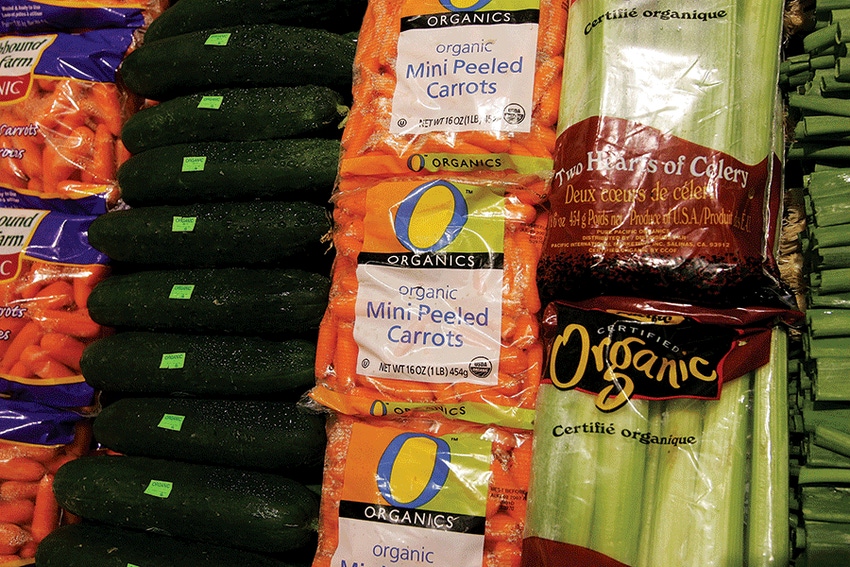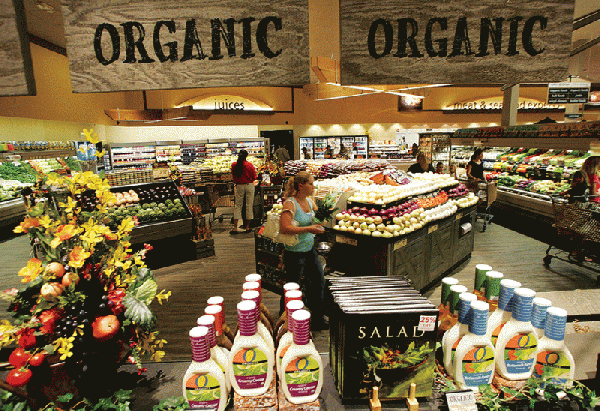
So, OK, in a recent weekly newspaper food insert from a national supermarket chain, the “fresh produce” section advertised “southern yellow peaches” for 88 cents per pound, while “certified organic peaches” were $2.89 per pound. “Local” tomatoes were 99 cents per pound, organic $2.49.
Given that getting a decent supermarket tomato or peach is akin to winning the Powerball lottery — both usually harvested when just beginning to ripen and gassed or otherwise treated to retard spoilage — I decided to blow a few extra bucks, buy some of each, and see if there was any detectable difference in taste or quality.
There wasn’t.

Most veggies/fruits in supermarkets are several orders of magnitude away from “fresh,†“garden ripe,†or the other fanciful terms used in store descriptions.—Getty Images/Justin Sullivan
The non-organic tomatoes were hard, mealy, and tasteless, as one has come to expect of store-bought at any time of the year. But, so were the more expensive organic ‘maters. Had they been placed side by side in a blind tasting, I doubt even the most discerning tomato aficionado could’ve distinguished which was which.
I followed the usual advice to put the peaches in a paper bag for a couple days to facilitate ripening. The regular peaches went in one bag, the organic in another.
I asked my wife to taste test them, but didn’t tell her which was which. “Both are blah,” was her verdict. “No peach taste, and the texture is nothing like a ripe peach should be.”
She thought the non-organic peach marginally better. Actually, both were pretty awful and we just tossed them — wasted money in both cases.
While I readily acknowledge these were totally non-scientific examples, using two of the most perishable items from the produce section, most veggies/fruits in supermarkets are several orders of magnitude away from “fresh,” “garden ripe,” or the other fanciful terms used in store descriptions.
From a nutrition standpoint, however, test after test has shown no appreciable difference between non-organic and organic.
In a world where the most popular food choices for American kids are chicken nuggets, fries, and a giant sugary soft drink, one can only wonder if, in another generation, anyone will even be eating veggies or fruits.
Those who feel it’s worth paying more — often quite a bit more — to buy organic and (supposedly) avoid pesticides, well, hey, the consumer rules, right?
But any difference in quality/nutrition may be more P.R. hype than reality. And even organic growers can use pesticides.
It basically comes down to this: If the consumer feels, for whatever reasons, organic is better/healthier/safer and is willing to pay a premium for it, that’s hunky-dory. But at the same time, don’t denigrate conventionally-produced foods that have been shown time after time to be just as healthy and safe, and which for many budget-constrained consumers may be their most affordable option.
About the Author(s)
You May Also Like




